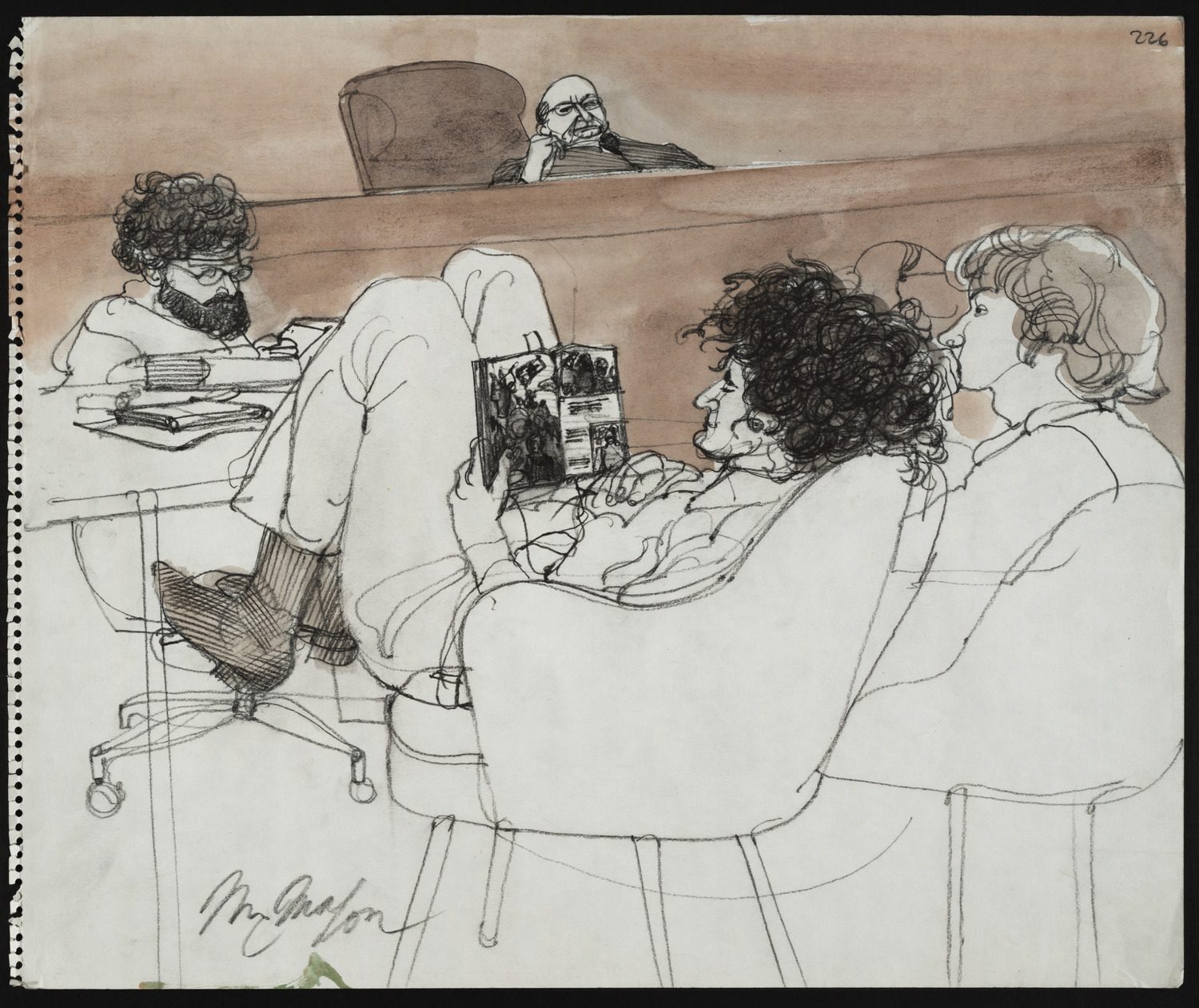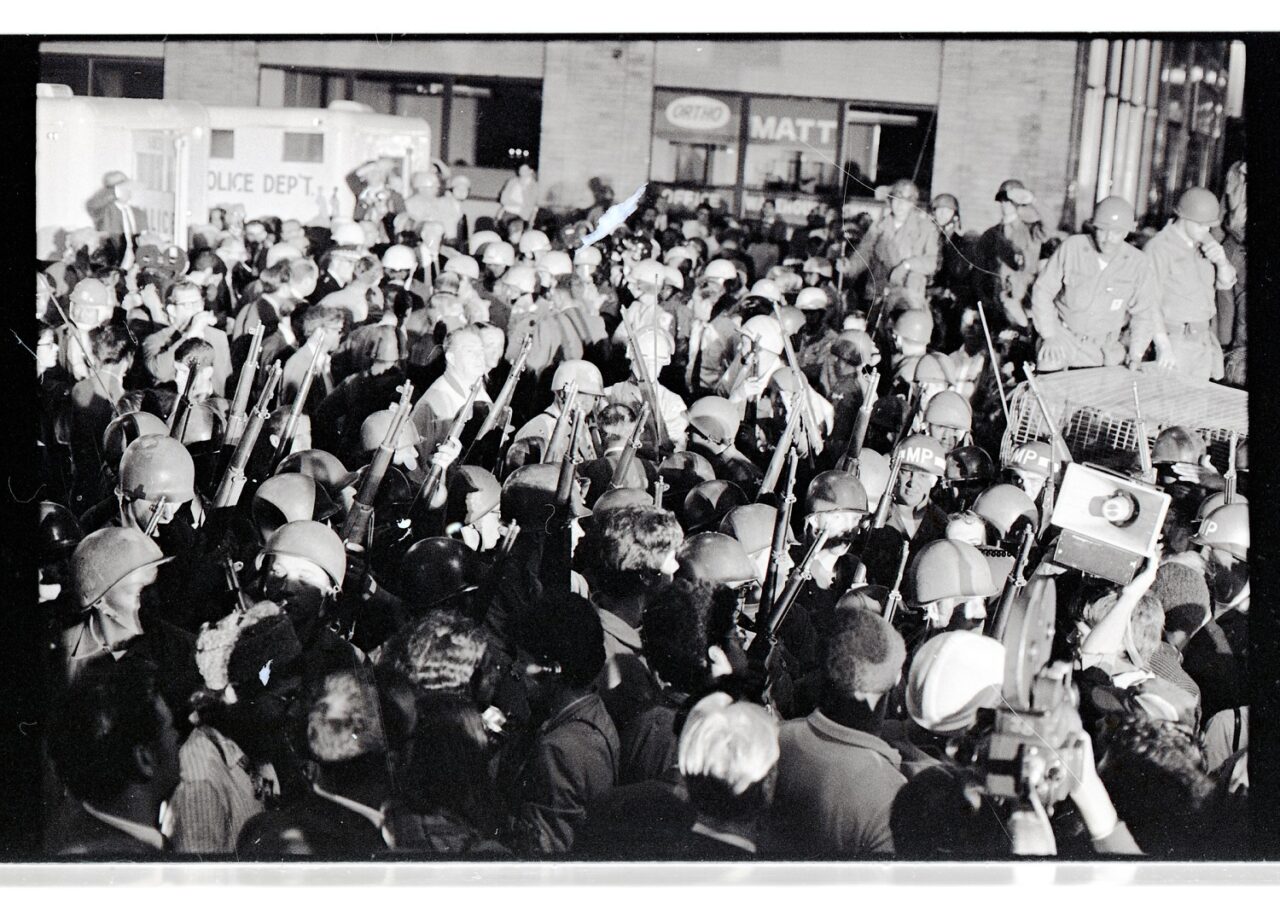CHM digital content manager Julius L. Jones discusses the circumstances in 1968 that set the stage for a momentous event as well as the latest virtual reality experience from the Chicago ØØ Project.
By the time Chicago hosted the 1968 Democratic National Convention, the city was the center of the American political world. Since 1904, Republicans had held their nominating convention in the city nine times and Democrats six times. Although the city had been firmly in the hands of Democratic leadership for several decades, the state was a competitive swing state in presidential elections, having gone for the winning candidate in every election since 1920. Chicago mayor Richard J. Daley and the national Democratic party hoped that by hosting their political convention in Chicago, they could win the state and the reelection for president Lyndon Johnson in 1968.
History, however, intervened. As the war in Vietnam became increasingly unpopular and unrest gripped the nation, Johnson surprised everyone by dropping out of the race. A spirited primary campaign saw New York senator Robert F. Kennedy emerge as the popular choice, only to be killed after winning the California primary on June 5. None of the remaining candidates captured the popular imagination quite like Kennedy. Dissatisfaction with the war effort, the perceived ineffectiveness of civil rights legislation, and the despair over the assassinations of Martin Luther King Jr. in April and Kennedy in June made the city a powder keg by August.
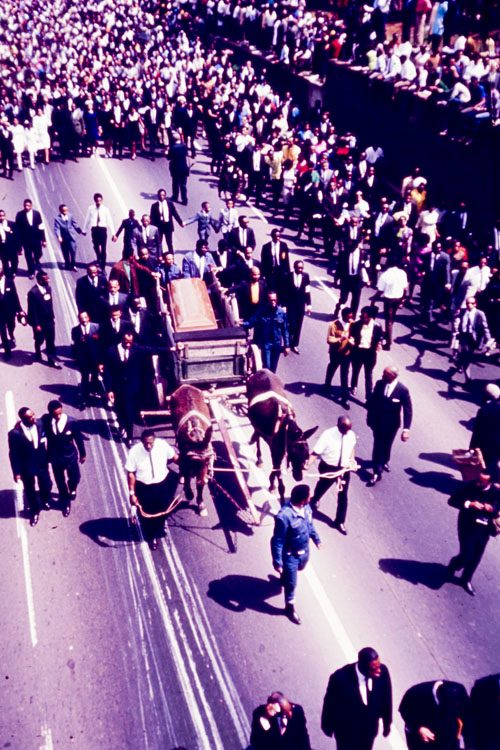
The funeral procession for Dr. Martin Luther King Jr. in Atlanta, April 9, 1968. Photograph by Declan Haun, ICHi-173515
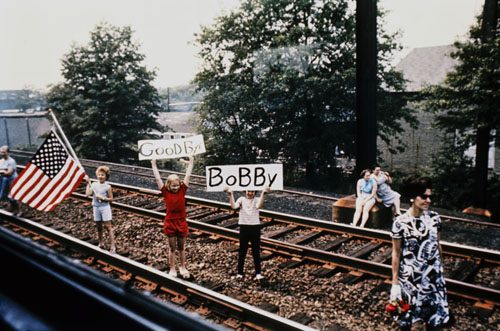
Children bid farewell to Robert F. Kennedy as his funeral train travels from New York to Washington, DC, June 8, 1968. Photograph by Declan Haun, ICHi-062718
In many ways, the protests outside the convention had as much to do with the absence of legitimate means to influence the electoral process than with the visceral opposition to the Vietnam War. Less than half the states in 1968 held primaries, meaning that the nomination was decided by party bosses who almost exclusively backed vice president Hubert Humphrey, ensuring him the nomination even though he did not compete in any of the primaries, leaving many voters feeling disempowered. Furthermore, Humphrey publicly supported Johnson’s war strategy despite his own personal reservations in order to appear strong and decisive as a potential commander-in-chief.
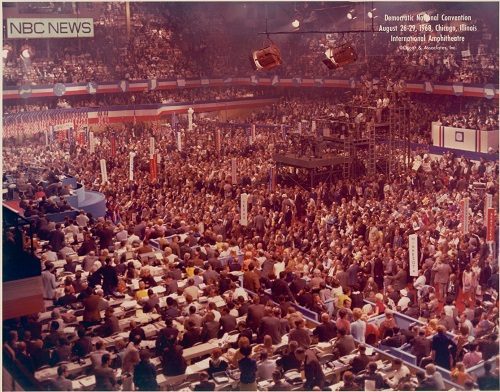
The scene inside the International Amphitheatre during the convention. Despite the best efforts of event organizers, the unrest in the city affected the proceedings inside. Chicago, August 26–29, 1968. ICHi-093668
As the convention began on Monday, August 26, at the International Amphitheatre, protestors congregated in Lincoln Park on the North Side and Grant Park downtown. Groups such as the Youth International Party, National Mobilization Committee to End the War in Vietnam, Students for a Democratic Society, as well as local activist organizations all participated in demonstrations. With each passing day and night, the crowds grew until the evening of August 28, when the tensions could no longer be contained. The Chicago Police Department and Illinois National Guard moved in and the situation turned violent. As the police used force to disperse the crowd, a national television audience heard the protestors chanting, “The whole world is watching!”
The world was indeed watching, yet what the world saw differed from what the protestors hoped. Instead of sympathizing with the bloodied youths, the majority of Americans faulted the protestors for the chaos and respected the police and Daley for asserting order in the streets. The Republican presidential candidate, former vice president Richard M. Nixon, positioned himself as the “law and order” candidate and was able to carry Illinois and win the presidency eight years after losing it.
To mark the fiftieth anniversary of this event, the Chicago History Museum, in partnership with Geoffrey Alan Rhodes of the School of the Art Institute of Chicago, created Chicago ØØ : The 1968 DNC Protests, a virtual reality experience. The fifteen-minute 3D VR tour with narration is made to be viewed on YouTube or on Facebook 360. On iPhone use the YouTube app; on desktop the Chrome browser. 360-degree stills can be explored on Google Street View.
